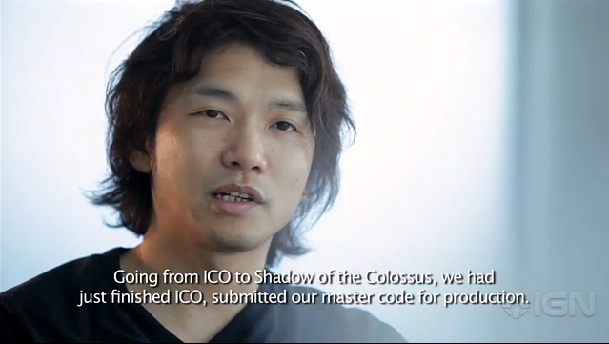What is master code
It's the executable code you use on the master discs (sent for manufacture), i.e. the finished article. Until you release a patch ;)
EDIT: Also known as "gone gold". Normally you have pre-alpha (submitted to test), alpha (all stuff implemented, with bugs, possibly some placeholder graphics/text/etc.), beta (stuff implemented and fixing bugs), gold/master (finished).
It's the executable code you use on the master discs (sent for manufacture), i.e. the finished article. Until you release a patch ;)
EDIT: Also known as "gone gold". Normally you have pre-alpha (submitted to test), alpha (all stuff implemented, with bugs, possibly some placeholder graphics/text/etc.), beta (stuff implemented and fixing bugs), gold/master (finished).
Thanks for the info.
When you say master disc, do you mean the one disc sent to the factory that makes more copies of that one disc?
Yes. Nowadays they probably send it over tinternets. In olden days you had to use a proprietary (i.e. overpriced but all it does is encrypt the data) CD burner and expensive discs (which probably had gold based stuff in them, hence the name).
Yes. Nowadays they probably send it over tinternets. In olden days you had to use a proprietary (i.e. overpriced but all it does is encrypt the data) CD burner and expensive discs (which probably had gold based stuff in them, hence the name).
Interesting. Thanks for the history information!
Sony used to make you buy a CD burner which cost 5x more than an off the shelf version, and buy special discs (which cost about 8x the price of normal discs), and send 8 discs to them for submission. Then they'd test them and if you failed submission (e.g. spelt Memory Card without a capital M and C, drew gameplay information outside a guard band of 20 pixels from each edge, or used red text) they'd fail you and make you do it all again. Fun times ;)
Yes. Nowadays they probably send it over tinternets. In olden days you had to use a proprietary (i.e. overpriced but all it does is encrypt the data) CD burner and expensive discs (which probably had gold based stuff in them, hence the name).
Actually most places still have master discs in the form of an iso builder which can actually be burned to a DVD or Bluray and this is common practice in testing as it can reveal issues you otherwise would never see.
In my previous job Master was actually a build traget and you could just select it in VS all it meant was that all debug options where turned off and that the optimisations were set to highest and it expected data to come from a disc. However you could tweak certain settings so that it would look at the iso file instead of an actual disc and you could even have logging and use #pragma optimize in the code if really necessary.
I have built a few of these for DiRT: Showdown because I had a bug that would only show up in disc builds camera during loading sequence would spin erratically, problem was a pointer that was still initialised to old data that no longer existed. Even a release build wouldn't show the issue only an ISO build and not even on that was it 100%, it's fun trying to debug that stuff.
Yeah, you still have a build which simulates a retail CD version, or uses an actual CD/DVD.
And that's what you send, the ISO image, either over tinternets or on an actual disc. They did used to be gold coloured and really chunky though! I once had to ring Sony America about a problem I was having burning discs (only got first 10 holes of an 18 hole golf course), the problem was a dodgy lead though ;) I didn't need to ring them when I had a problem where I was trying to burn the license file from a floppy (not fast enough to read data at correct rate) onto the CD though, I worked that out myself ;)
Sony used to make you buy a CD burner which cost 5x more than an off the shelf version, and buy special discs (which cost about 8x the price of normal discs), and send 8 discs to them for submission. Then they'd test them and if you failed submission (e.g. spelt Memory Card without a capital M and C, drew gameplay information outside a guard band of 20 pixels from each edge, or used red text) they'd fail you and make you do it all again. Fun times ;)
Dang...technology sure has come a long way.
Further reading ![]()
http://en.wikipedia.org/wiki/Software_release_life_cycle#Release_to_manufacturing_.28RTM.29
And the term dates back to:
http://en.wikipedia.org/wiki/Master_recording
A funny bit of trivia -- when Valve shipped Half-Life 1, they had all their code in a directory named "src" (source code). When it went gold, they renamed that directory to "GoldSrc", and made a second copy called "Source".
They kept maintaining the "GoldSrc" code-base with patches / expansions for Half-Life 1, while all their new features were made to the "Source" version that became Half-Life 2.
They never actually came up with a name for their engines, so they called the HL1 engine "the GoldSrc engine", and the HL2 engine "the Source engine". Lazy bastards!








